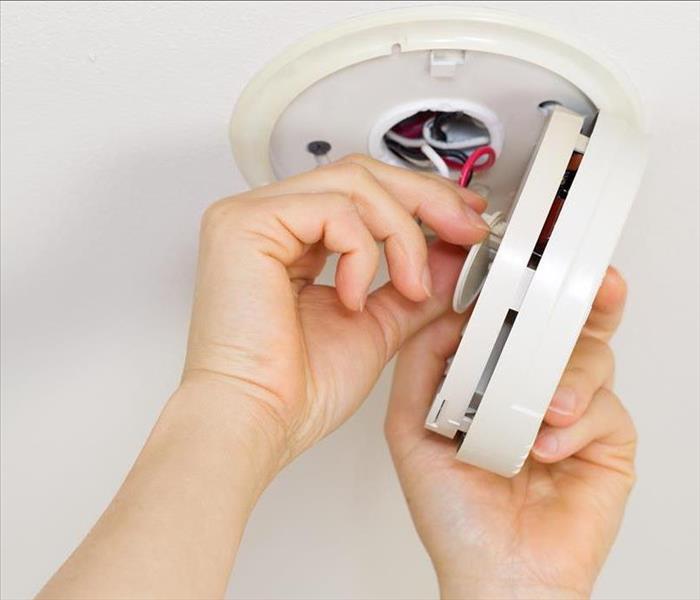Factors To Consider When Buying a Smoke Detector
6/22/2022 (Permalink)
While you may hope that flames never touch your place in Clearfield, UT, the reality is that blazes happen. The Nation Fire Protection Agency reports that between 2015 to 2019, approximately one-quarter of fires occurred within homes. Furthermore, fire crews attended to at least 346,800 residential fire-related calls.
During these dire times, a smoke alarm serves as the first line of defense, signaling trouble and helping people escape.
Tips for Picking the Right Smoke Alarm for Your Home
Like any device, alarms break or deteriorate with age. They should last about 7 to 10 years. However, life happens, and you may need to upgrade sooner. It's essential to check them every six months, replacing batteries at that time and ensuring they work correctly. The following are signs of a broken or malfunctioning unit:
- Constantly chirps or beeps
- Color lights don't match the book guides
- Reacts suddenly without cause
- Fails to go off during testing
If you have a smoke detector with one of the following conditions, it's time to grab a new one. Use the following information to invest in the right option to safeguard your home.
1. Understand the Initial Layout and Connections
Know how the builders installed detectors. They may have put in hard-wired or battery-powered units. Keep the same format, although can swap out for different manufacturers. Hard-wired selections are connected throughout the home. When one is triggered, they all go off, creating additional noise and, perhaps, more warning. These devices often require an electrician's help.
Battery-operated devices are not connected and work as individual parts; people often find them more manageable to change on their own.
2. Pick Your Sensor
Discuss how you want smoke detected within the home. This interest influences your smoke alarm investment. Choose between photoelectric and ionization models. Do you want something that identifies flames? Photoelectric products recognize light; thus, they trigger with sparks. Ionization detectors act differently. They react with smoke. There are dual-sensor selections that pick up both.
3. Determine Your Need for Noise
Think about your home's size and the occupant's age and hearing. Those with smaller buildings and middle-aged, average-hearing adults may rely on traditional beeping units. These go off within the immediate vicinity, helping with fire safety measures. For instance, if a fire starts in the kitchen, the noise reacts nearby. Others hear it and can escape.
However, if you live in a larger home with multiple levels and rooms, you may not immediately recognize the noise. In addition, those with weaker hearing or younger kids may struggle too. Interconnected units increase the volume, allowing people to receive notifications throughout the home.
In addition, little ones may respond to voice alarms that indicate where the flames are located, helping avoid the area and find a suitable place for escape.
4. Get Profesional Input
Ask fire restoration experts to assess your home in Clearfield, UT, determining if you have enough smoke detectors. In addition, these specialists can advise you on whether you need additional units or should move alarms or upgrade them to meet safety codes.
When you're ready to purchase a smoke alarm, reflect on your home's original design and your current lifestyle. Select options that improve your escape plans and help loved ones find safety.



 24/7 Emergency Service
24/7 Emergency Service
